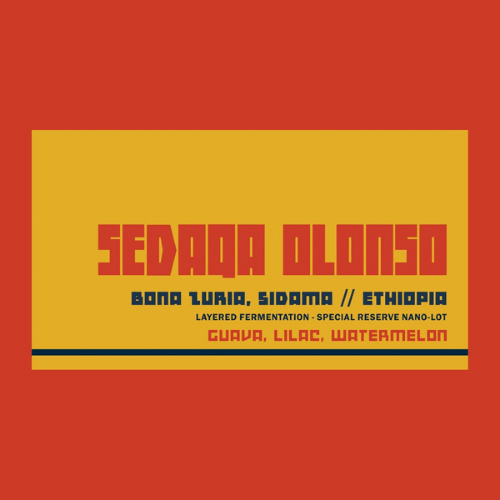Ethiopia – Sedaqa Layered Fermentation
24,05 $
A cotton-candy sweetness anchors the cup and is complemented by a basil-lemonade brightness and fresh, light fruit notes similar to watermelon and guava.
Description
Technical Info
Producer: Small Holder Producers
Region: Bona Zuria, Sidama
Process: Layered Fermentation
Elevation: 2,350 meters above sea level
Varietal: Zipa
About the Producers
-words and photos by our sourcing and trade partner, Catalyst Trade
Typical processing for washed Ethiopian coffee sees cherries entering the washing station atop donkeys or carried by hand. Usually contained in a plastic bag at this stage, the cherries are weighed with a traditional scale (often painted a rich shade of sea green) and the volume entered against the producer’s name in the washing station’s logbook. The smallholder receives their money, which is used to purchase food and school supplies, and to pay for rent on their huts and small sections of land.
Once the cherries are logged, they are either carried straight to the hoppers or—as we at Catalyst Trade prefer and pay premiums for— dumped into float tanks so that lower-density cherries can surface and be skimmed off for lower grade coffees or local consumption. The higher-density cherries sink to the bottom, displaying their quality by their weight. After this, the remaining cherries are carried in wood-and- wire trays to drying tables to let the water drip off of them and receive careful hand sorting of any visible defects.
At this point, the cherries, their red cheeks glowing with health, are dumped into big cement hoppers where they tumble down into the pulping machines. Here, the seed is separated from the fruit by rough- surfaced pulping disks and then channeled into various density channels and tanks where they start fermentation to loosen the sticky mucilage from the seed.
This is where our Layered Ferment process kicks in and shakes things up. Instead of just filling the fermentation tank with pulped parchment and then covering them with water, we fill the tank partially with a day’s harvest of pulped coffee and leave the water-free parchment to begin fermentation. Next day, we add another batch of pulped coffee, and then on the third day we add the last layer. Still without water, the beans ferment for a carefully-timed interval and then are funneled into the washing channels where local filtered river water pours over them and laborers, often singing songs to stay in sync with each other, scrub them with wooden rakes until the water runs clear.
Finished with the washing, the beans are carried in wood-and-wire trays to draining tables, where the excess water drains away for 6-10 hours. Post-draining, the beans, still in their parchment jackets, are carried to open-air drying tables that are shaded by mesh canopies and they laid out to slowly let the sun kiss them and draw out their moisture content. In a step up from usual table materials, the drying beds are made from nylon mesh instead of bamboo weave covered with jute. Once the cherries reach their ideal drying level, they are bagged up and kept carefully separate as they are transported first to a regional processing mill and then to Addis Ababa, Ethiopia’s capitol, for final export processing and shipping to the world
Vendor Information
- No ratings found yet!



